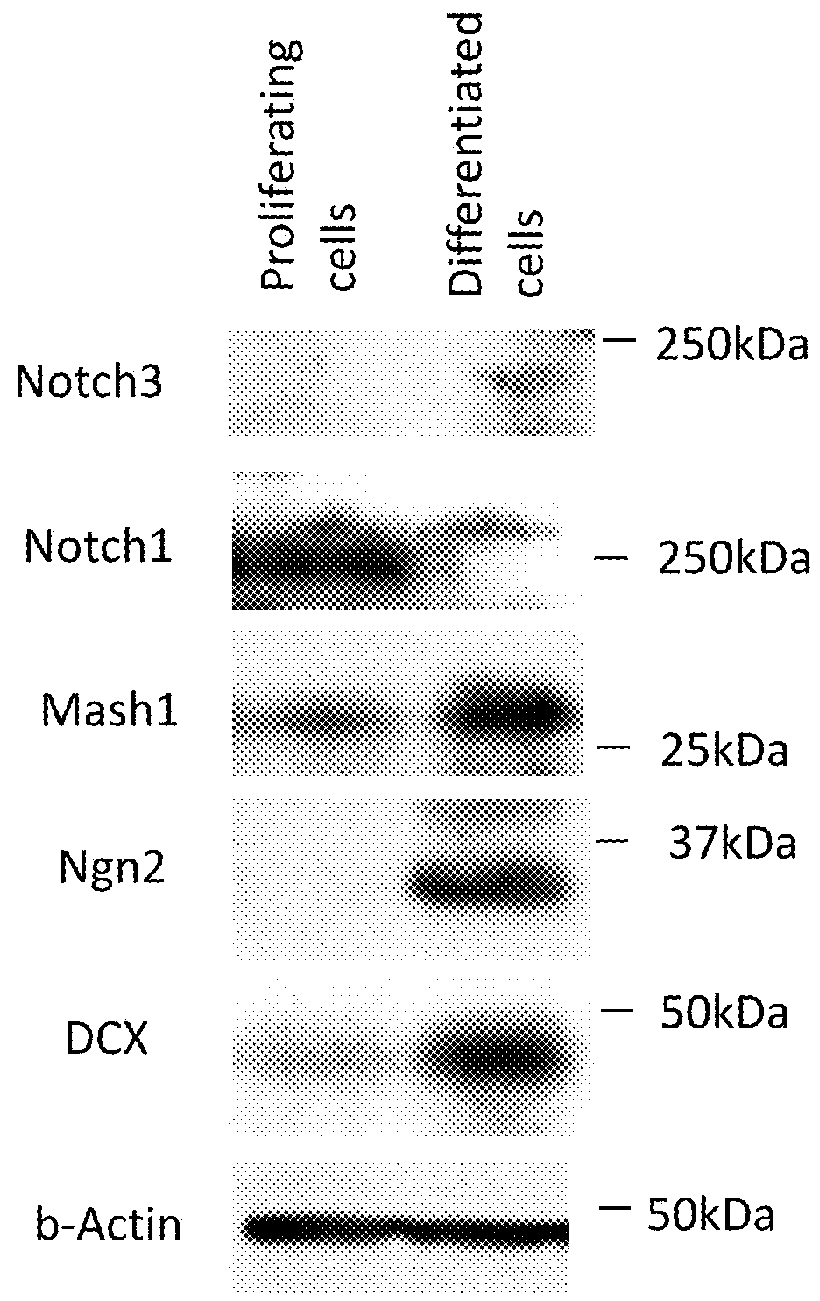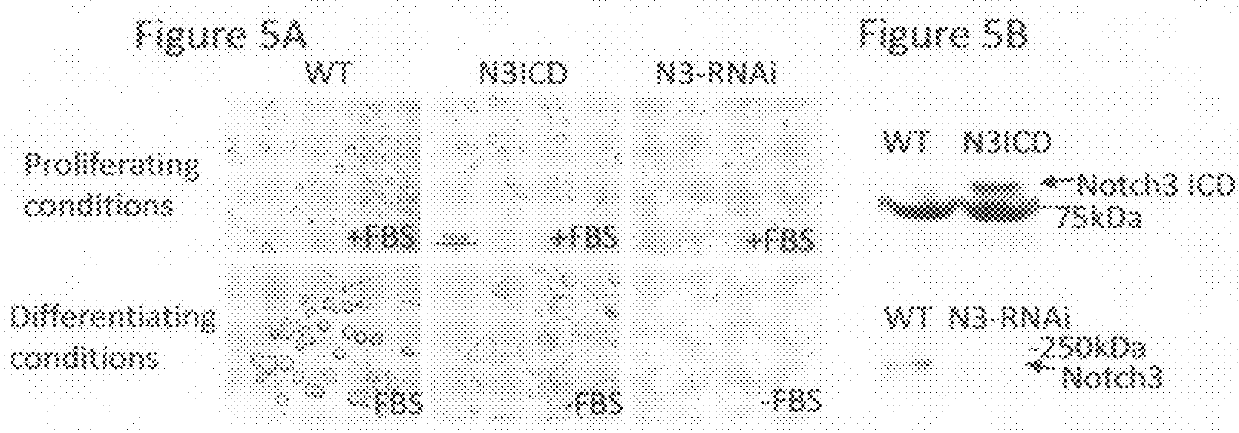Method of inducing cellular differentiation using the Notch3 receptor intracellular domain
a notch3 receptor and intracellular domain technology, applied in the field of disorders, can solve the problems of severe developmental abnormalities, severe mental and/or physical impairment, and eventually death, and their mechanisms are not fully understood
- Summary
- Abstract
- Description
- Claims
- Application Information
AI Technical Summary
Benefits of technology
Problems solved by technology
Method used
Image
Examples
example 1
Generation of Notch3 Intracellular Domain (N3ICD) cDNA
[0106]Notch3 cDNA sequence was analyzed using an on-line public database (National Center for Biotechnology Information). Human total liver RNA (Life Technologies, Grand Island, N.Y.) was used as template to synthesize the first strand of cDNA using a commercially available cDNA synthesis kit. Notch3-specific primers to regions outside the Notch3 intracellular domain were used to amplify cDNA from Notch3 mRNA. In a second step, primers complementary to the N-terminal and C-terminal ends of N3ICD, extended with linkers including in-frame, non-identical restriction sites corresponding to two different restriction enzymes (e.g. HindIII and ClaI), were used to amplify N3ICD by PCR. The PCR reaction product was treated with HindIII and ClaI, then separated on an agarose gel. The identity of the cDNA obtained was verified against a standard oligonucleotide ladder mixture of known molecular sizes.
example 2
Generation of a Plasmid Vector, Containing the N3ICD Polynucleotide Sequence
[0107]The purified N3ICD cDNA was ligated in-frame, using a ligase enzyme, in a plasmid which also comprises an ampicillin and a puromycin resistance elements (e.g. pBABEpuro), and which was also previously treated with the same pair of restriction enzymes. Typically, the two restriction enzymes used are selected in manner that generates non-matching ends on the vector, in order to prevent the vector from ligating back on itself in the absence of the insert containing the polynucleotide of interest. After ligation, the pBABEpuro plasmid containing the N3ICD insert was introduced by transformation into E. coli, and then the E. coli bacteria were spread on an agar plate containing ampicillin. One of the surviving E. coli colonies, which is expected to contain the vector fused with the N3ICD insert, is selected and further grown in LB broth containing ampicillin. The LB broth is a standard bacterial culture med...
example 3
Transfection of Neuro-2a Cells with a Plasmid Expressing N3ICD
[0109]The Neuro-2a mouse neuroblastoma cell line is an example of proliferating cells that can be induced to differentiate by expressing the N3ICD polypeptide. The transfection of Neuro-2a with a vector containing the N3ICD polynucleotide can be performed through any available method well known to those of ordinary skill in the art. In this particular case, a pBABEpuro plasmid containing the N3ICD cDNA insert was transfected into Neuro-2a cells using Lipofectamine 2000, a commercially available liposome transfection kit (Life Technologies, Grand Island, N.Y.). After transfection, the cells that have incorporated the vector are selected by adding puromycin to the cell culture medium. Cell colonies are selected and grown individually, then each cell colony is tested by Western blot for the expression of the N3ICD polypeptide, in comparison with the original Neuro-2a cells, as depicted in FIG. 5B.
PUM
| Property | Measurement | Unit |
|---|---|---|
| size | aaaaa | aaaaa |
| physical impairment | aaaaa | aaaaa |
| amino-acid sequence | aaaaa | aaaaa |
Abstract
Description
Claims
Application Information
 Login to View More
Login to View More - R&D
- Intellectual Property
- Life Sciences
- Materials
- Tech Scout
- Unparalleled Data Quality
- Higher Quality Content
- 60% Fewer Hallucinations
Browse by: Latest US Patents, China's latest patents, Technical Efficacy Thesaurus, Application Domain, Technology Topic, Popular Technical Reports.
© 2025 PatSnap. All rights reserved.Legal|Privacy policy|Modern Slavery Act Transparency Statement|Sitemap|About US| Contact US: help@patsnap.com



